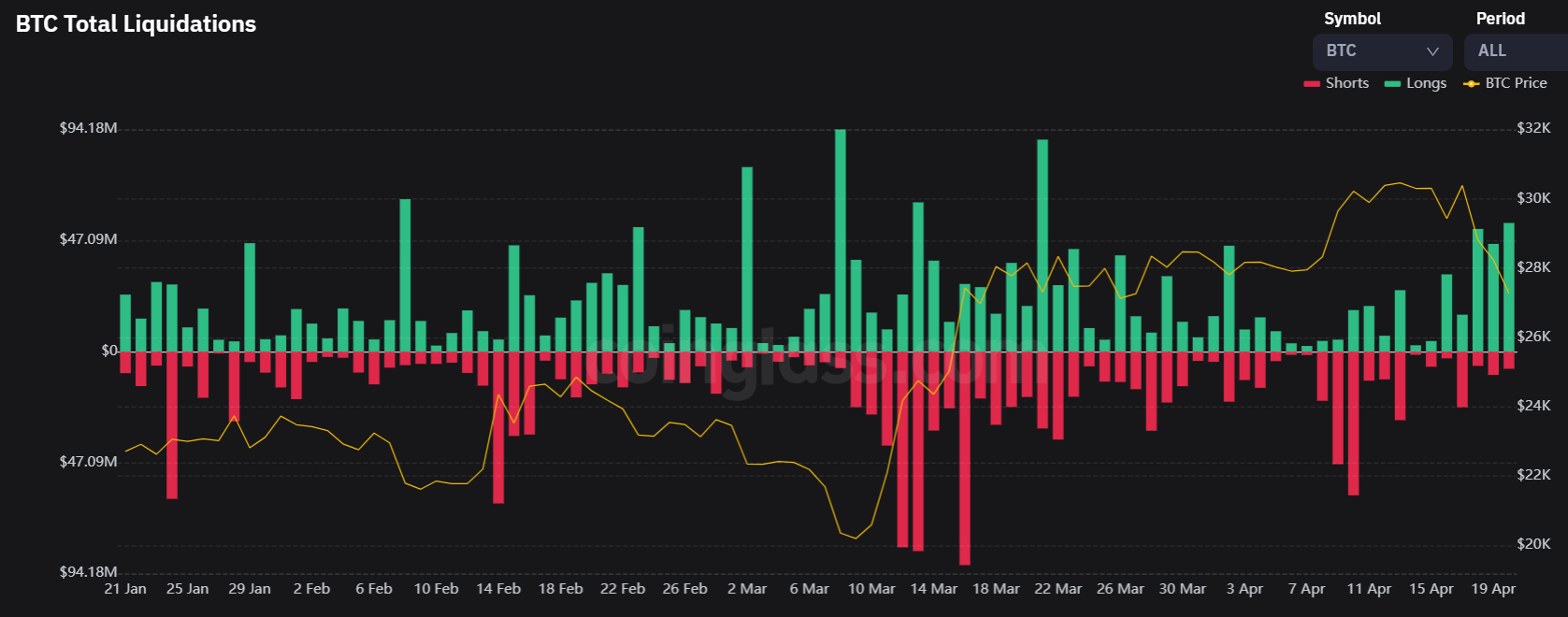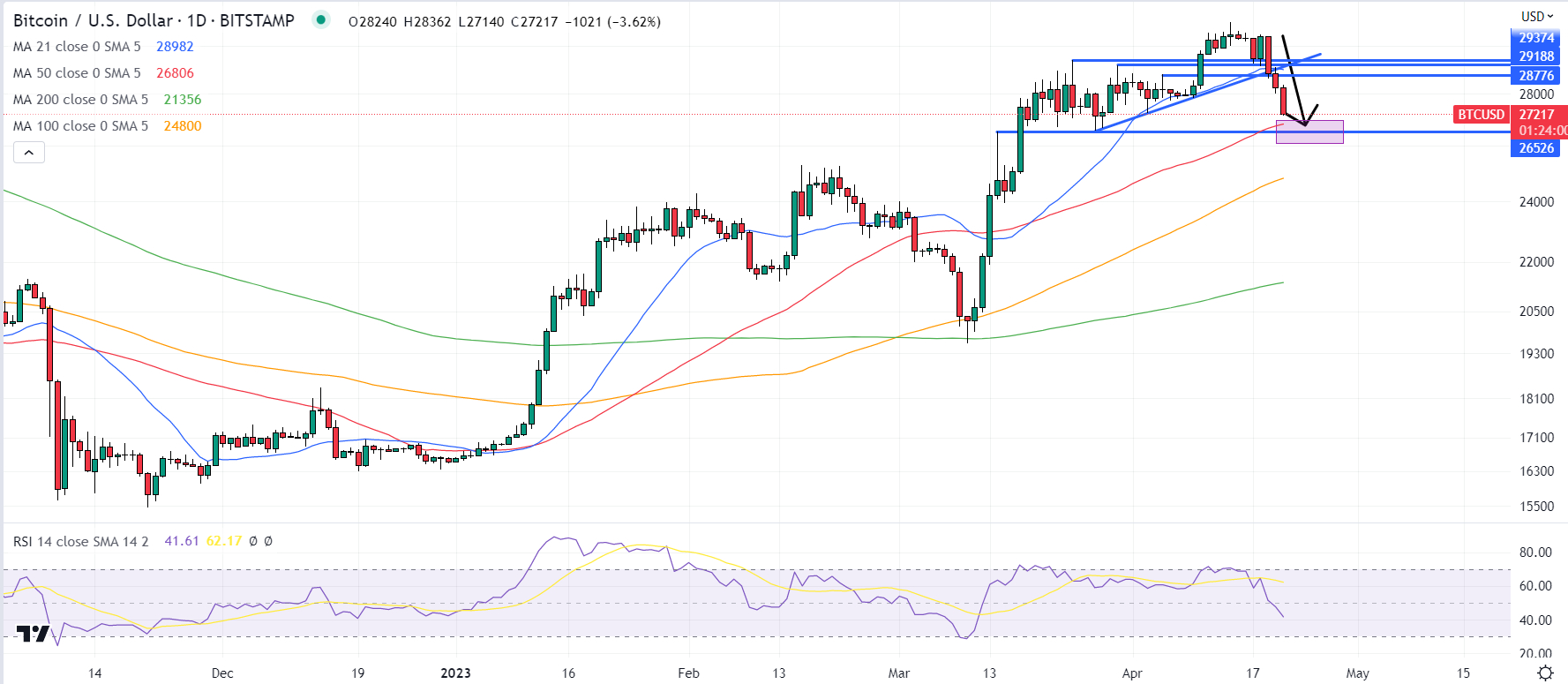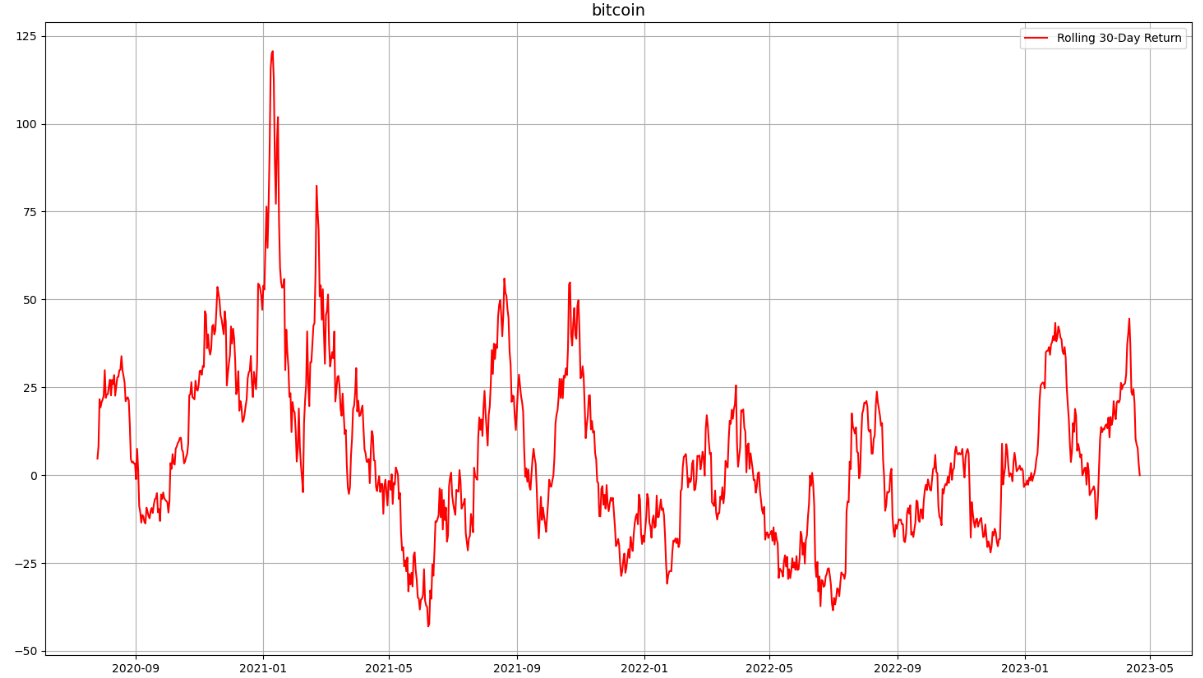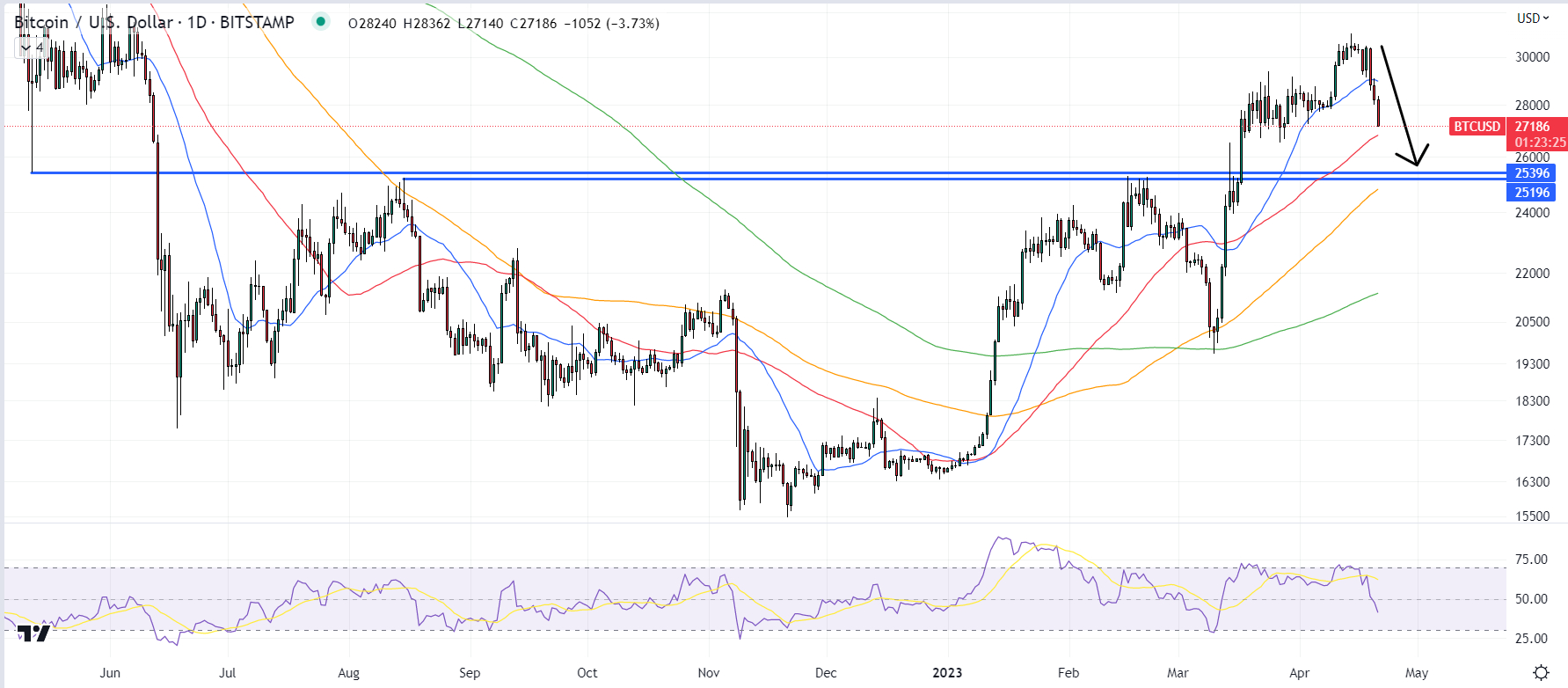Leveraged long positions in the Bitcoin futures market have been “rekt” (meaning stopped in internet lingo) over the past few days.
According to data presented by crypto derivatives analytics website coinglass.com, long position liquidations exceeded $150 million in the past three days.

In effect, the 10% drop of Bitcoin in the last three daysdropping from the mid-$30,000 to current levels of $27,000, marks one of the most intense periods of long liquidation since the start of the year.
Selling pressure accelerated earlier this week when BTC price broke below key support in the $29,000 area as 1) the 21-day moving average, 2) an uptrend from late March and 3) highs at the end of March.

Since that break down, technicians have been targeting a retest of support in the $26,500-$800 area in the form of a support level turned resistance from March and the 50-day average.
Why is Bitcoin down this week?
Macro developments may partially explain the decline of Bitcoin over the week, which is now just under 10% (for reference, this would be Bitcoin’s worst weekly drop since the FTX debacle last November).
Survey data from the United States has brushed a mixed picture of economic dynamics in the United Statesclouding the waters on expectations for the economic outlook, as well as the prospects for further Fed tightening.
This, combined with UK inflation data much warmer than expectedpushed US yields higher this week, which is generally negative for non-performing crypto assets like Bitcoin.
Some analysts pointed to continued uncertainty regarding the regulatory situation in the United Statesanother factor weighing on the crypto, with SEC Chairman Gary Gensler’s appearance before Congress earlier this week adding little certainty to the outlook.
Meanwhile, the passing of historic crypto regulations in the EU did little to boost the mood.
Indeed, this week seems to have been dominated by 1) profit taking after a very strong start to the year which led to 2) the liquidation of a large number of overly bullish/greedy bulls who were expecting Bitcoin crosses $30,000.
Bitcoin market cooling
Indeed, a number of measurements last week showed that the Bitcoin market may have been overheating in the short term when the price of BTC hit new 10-month highs above $30,000.
The 14-day Relative Strength Index had moved above 70, signaling an overbought market. It has now fallen to around 42 and if Bitcoin’s decline continues to $25/26,000, it could signal an oversold market soon.
Meanwhile, BTC’s rolling 30-day yield had also hit its highest level since late November.

The prospect of a continued move back towards support in the $25,200-400 region as optimism unwinds is certainly on the table for the days/weeks ahead.

But that shouldn’t hurt the long-term bull market thesis too much and could be a great entry point for longer-term bulls to re-enter the market.
As reported in a post on Thursday, the 25% delta bias of short-term Bitcoin options has turned negative, but the bias of longer-term options continues to lean towards positive.
Confidence in Bitcoin’s long-term price outlook makes sense when considering macro factors, on-chain trends, and medium to long-term technical indicators.
While there remains significant uncertainty about how often the US Federal Reserve will raise interest rates and when it will start cutting them, one thing seems certain: the end of the Fed’s tightening cycle seems near as US inflation and economic growth slow.
This implies that adverse changes in financial conditions are unlikely to return as a major headwind to crypto markets in 2023, as they did in 2022.
During this time, Bitcoin is likely to continue to benefit from the tailwinds of major recent technical developmentsincluding 1) Bitcoin’s dramatic rebound from its 200-day moving average and its realized price in mid-March and 2) Bitcoin’s “golden cross” (when the 50-day moving average crossed the above the 200-day average) in early February.
Elsewhere, a litany of on-chain and market cycle indicators cry out that last year’s lows signaled the end of the crypto bear market. Many investors will remain convinced that the Bitcoin bull market in 2023 will happen in any case.
As such, expect bargain hunters and dip buyers to eagerly wait on the sidelines to step in whenever Bitcoin shows significant price declines, just as it did in mid-2019. -March.
